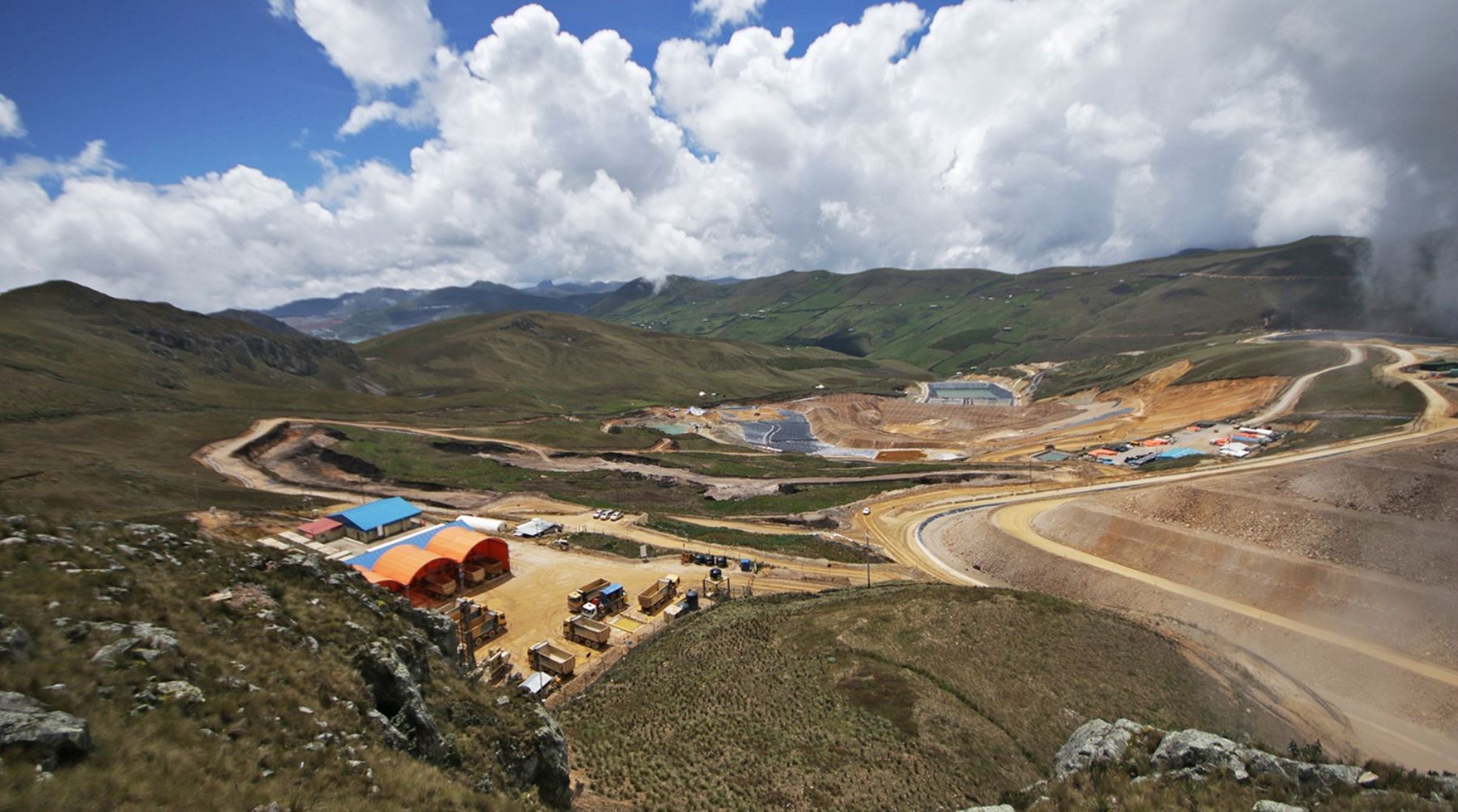
Rio Tinto (ASX:RIO) has entered into a joint venture agreement with First Quantum Minerals (TSX:FM) to unlock the development of the La Granja copper project in Peru. The project, located at high altitude in Cajamara, Northern Peru, is one of the largest undeveloped copper deposits in the world, with an estimated resource of 4.32 billion tonnes at 0.51% copper.
Under the agreement, First Quantum will acquire a 55% stake in the project for $105 million and invest up to $546 million to sole fund capital and operational costs, taking the project through a feasibility study and towards development. The transaction is expected to be completed by the end of Q3 2023.
As the majority owner, First Quantum will operate the La Granja project, with initial work focussed on completing the feasibility study. Rio Tinto had acquired the La Granja Project from the Government of Peru in 2006 and has since carried out extensive drilling programs to expand the declared resource and understanding of the orebody, and established partnerships with host communities, local and national governments.
La Granja is currently the fourth-largest copper project in the world, and Peru is the world’s second-largest copper producer. The agreement between Rio Tinto and First Quantum Minerals is expected to boost the Peruvian mining industry and create new job opportunities in the region. The joint venture will also provide the necessary capital to develop the La Granja project, which is expected to become a large, long-life operation, benefiting the local communities and the country’s economy.
The joint venture agreement between Rio Tinto and First Quantum Minerals to develop the La Granja copper project in Peru is not only significant for the South American nation’s mining industry, but also for the two global mining giants involved. For Rio Tinto, the move further strengthens its copper portfolio, which was recently boosted by the acquisition of Turquoise Hill Resources and the launch of underground mining at Oyu Tolgoi in Mongolia.
On the other hand, First Quantum Minerals has been in the news lately for its dispute with the Panamanian government over royalties, which led to a temporary halt in operations at its Cobre Panama mine earlier this year. The two parties reached an agreement in March that guarantees a minimum annual income of $375 million to the Panamanian government, allowing the mine to resume operations.
With the La Granja project now on the horizon, First Quantum Minerals is expected to focus its attention on unlocking the potential of one of the world’s largest undeveloped copper deposits. The joint venture will inject the necessary funds to take the project through a feasibility study and towards development, which is likely to create new job opportunities in the region and benefit local communities.
The above references an opinion and is for information purposes only. It is not intended to be investment advice. Seek a licensed professional for investment advice. The author is not an insider or shareholder of any of the companies mentioned above.
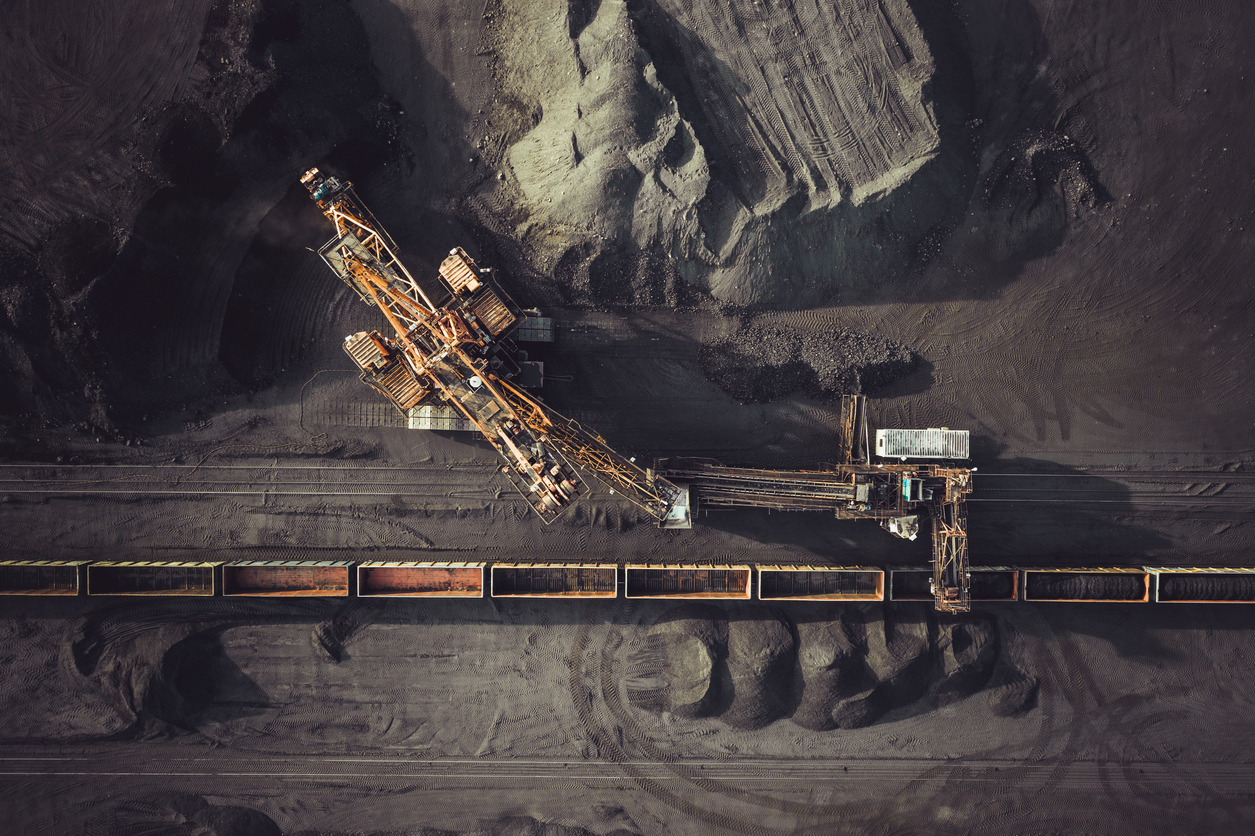
As the war in Ukraine continues, and sanctions against Russian business continue to expand, mining companies have been exiting businesses in the country. Rio Tinto (ASX:RIO), BHP (NYSE:BHP), and more have been selling assets in Russia as they mak their exit.
Canada’s Kinross Gold (NYSE:KGC) is the latest company to dump holdings there, selling the Kupol and Dvoinnoye operating mines; exploration assets, including the Chulbatkan project; and related infrastructure to Highland Gold Mining and other associates in a $680 million cash deal. Under the agreement, Kinross will receive $400 million in cash for the Kupol mine and surrounding exploration rights.
When the transaction closes, Kinross will receive $100 million, with another $150 million to be paid out before the end of 2023, an additional $100 million before the end of 2024, and a final payment of $50 million before the end of 2025.
Highland Gold CEO Vladislav Sviblov commented in a press release: “Our largest mining hubs are located in the Khabarovsk and Chukotka regions, precisely where these mines are located, and we, therefore, anticipate operational, logistical and management synergies. We also intend to maintain the high operating standards of the previous owner, and to invest in employee development.”
Deals in the country are tightly linked with government approval and oversight considering the stakes, and the Russian Federation Ministry of Industry and Trade, Denis Manturov, commented: “Kinross Gold followed the second of the three options proposed by the government for foreign investors with choosing a civilised way out of Russian projects. Therefore, we support the execution of such a deal: the result will be a stable flow of tax revenues, save of working places and support for social projects in the regions of presence.”
A Civilized Way Out
For mining companies with assets in Russia, the path out of the country has been swift. The largest mining companies in the world have all pulled out or are in the process of selling assets, and while the reasons behind it vary, sanctions and political risk are the primary drivers.
Kinross Gold is the latest company to sell its Russian assets, with the sale totaling $680 million, and many other companies are in discussions to exit their businesses in the country.
The European Union has likewise stated that in response to Russia’s invasion of Ukraine, the European Commission will impose a ban on Russian coal and other items. A potential EU ban on Russian coal import, according to a Reuters source, would be worth around €4bn per year.
The above references an opinion and is for information purposes only. It is not intended to be investment advice. Seek a licensed professional for investment advice. The author is not an insider or shareholder of any of the companies mentioned above.

A US House committee voted to include the language in a broader budget reconciliation package that would prevent Rio Tinto Ltd from building its Resolution copper mine in Arizona. Elected officials in nearby Superior, Arizona, have said the mine is crucial to the region’s economy. The tribe of San Carlos Apaches and other Indians say the mine would destroy the sacred land where they hold religious ceremonies. Conflict has stalled a decision until now, but the committee’s vote finalizes the language that will determine the future of the mine.
The House Natural Resources Committee on Thursday passed the Save Oak Flat Act, a $3.5 trillion compensation measure. Should the House reverse the move, the measure faces an uncertain fate in the US Senate. Approval of the measure would reverse a 2014 decision by former President Barack Obama that Congress began a complex process to hand over more than 40 billion pounds of copper owned by Rio Tinto in exchange for acreage Rio owns nearby. Former President Donald Trump gave final approval to the process before leaving office in January, but his successor Joe Biden could reverse it and leave the project in limbo.
A final reconciliation budget should also include funds for solar, wind, and other renewable energy projects that require tremendous amounts of copper. Electric vehicles consume much of the metal, as do internal combustion engines. The Resolution mine would cover about 25% of the demand for U.S. copper.
Mayor Mila Besich, a Democrat, said the project appeared stuck in “bureaucratic purgatory”. She hopes the House will not allow the language to remain in the final bill. The move “seems contradictory to what the Biden administration is trying to do to address climate change”, Besich said.
Rio said it would continue consultations with local communities and tribes. Rio Tinto chief executive Jakob Stausholm plans to visit Arizona later this year.
The above references an opinion and is for information purposes only. It is not intended to be investment advice. Seek a licensed professional for investment advice. The author is not an insider or shareholder of any of the companies mentioned above.
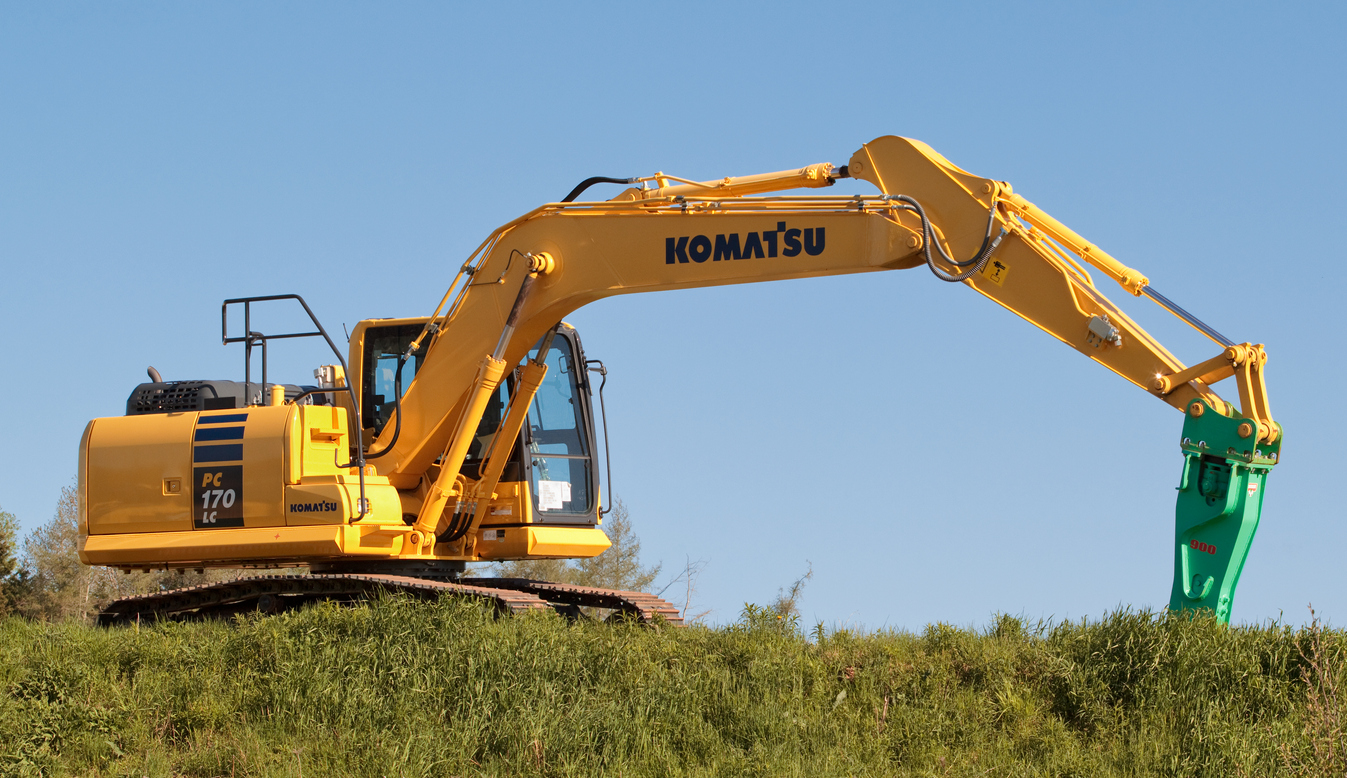
Komatsu is forming an alliance with some of its mining customers Rio Tinto, BHP, Coldelco, and Boliden called the Komatsu Greenhouse Gas (GHG) Alliance. The hope is that this will give Komatsu the chance to essentially supervise and guide these companies through a transition to zero-emission mining equipment and infrastructure. They plan to collaborate with these customers on their products, project development, and assaying. Komatsu’s President of Mining and Business Division Masayuki Moriyama said:
“We are honoured that our customers, several of the largest mining companies in the world, have agreed to participate in the Komatsu GHG Alliance and work in partnership with us to develop sustainable solutions for mining “We look forward to close collaboration with these industry leaders to accelerate development and deployment of the next level of equipment designed to reduce greenhouse gases from mining operations and ultimately achieve the goal of zero-emission mining.”
Komatsu has been investing in zero-emission technology for quite some time now through the development of electric diesel dump trucks, electric power, shovels, and regenerative energy storage equipment.
The goals of this partnership are two-fold. Firstly, they hope to work with these 4 companies to develop a haulage truck that can run on different power sources including diesel, electric, and hydrogen powered fuel cell tech. They hope to demo this product at the MINIExpo in Las Vegas this September. In the long-run, Komatsu hopes to reduce its products carbon footprint by 50% and perhaps even achieve carbon neutrality by 2050.
This alliance will hopefully help achieve these goals, and Komatsu also has to expand the alliance still further.
Rio Tinto and BHP plans to test trucks and purchase them first
Rio Tinto plans to purchase some of the first haulage trucks once Komatsu clears them for sale. Rio Tinto Chief Commercial Officer Alf Barrios said:
“Rio Tinto and Komatsu have a shared history of partnership on innovation going back to when we built the world’s largest Komatsu autonomous haulage fleet in 2008.”
“Our support of a trial, and the option to buy some of the first trucks from Komatsu, underscores our shared commitment to actively collaborate on product planning, development, testing and deployment of the next generation of zero-emission mining equipment and infrastructure as we look to decarbonise our business.”
On the other hand, BHP also will have access to the first edition of the trucks and will play a key role in their development. BHP plans to provide Komatsu with the key engineering and technical background needed for the haulage truck model’s development. It also plans to form a partnership with Komatsu via the BHP FutureFit Academy so that future users will be able to operate and maintain the equipment.
The above references an opinion and is for information purposes only. It is not intended to be investment advice. Seek a licensed professional for investment advice. The author is not an insider or shareholder of any of the companies mentioned above.
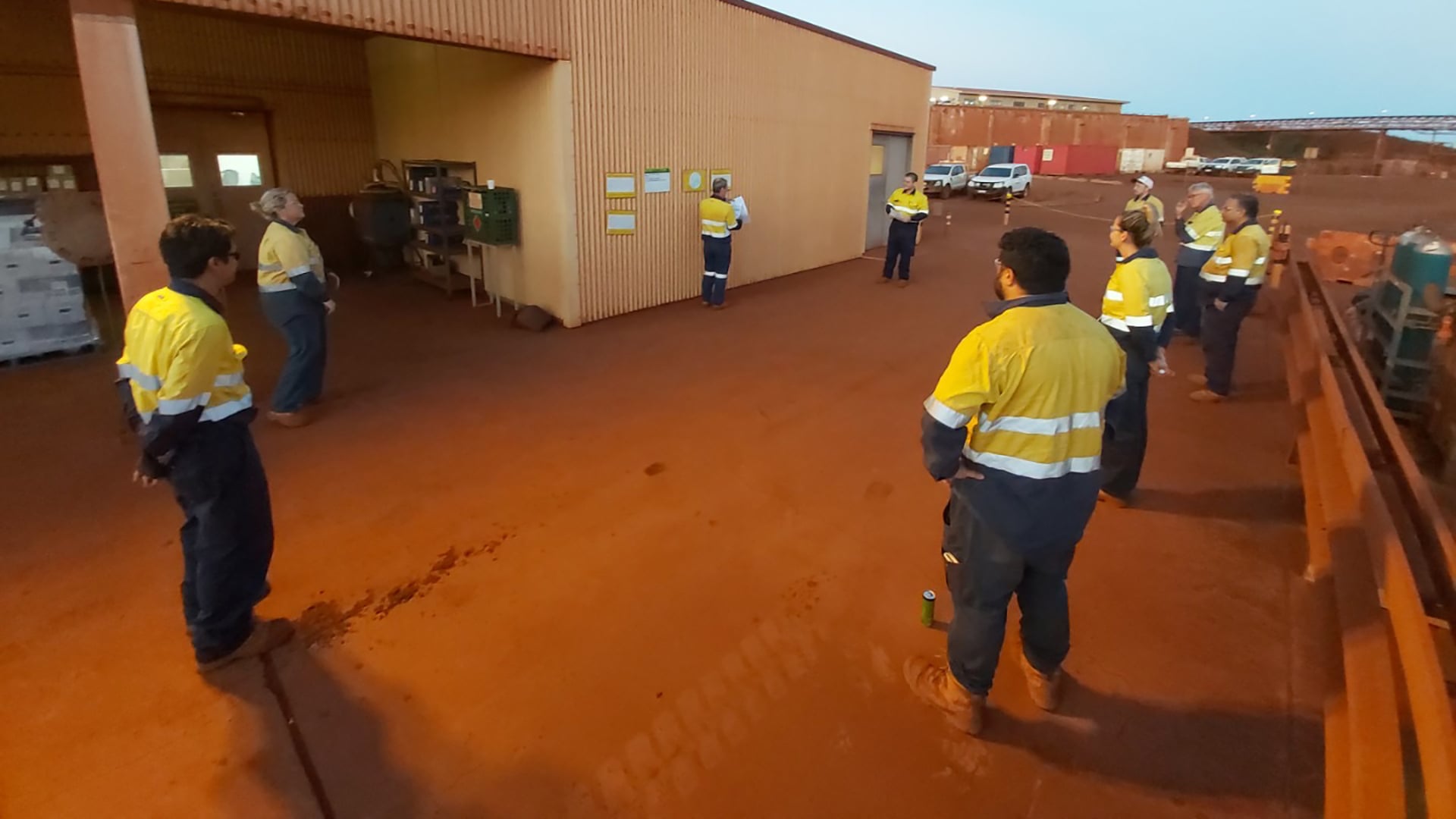
Rio Tinto (NYSE:RIO) announced record earnings and dividends today as commodity prices continue to surge as the global economy starts to reopen. The company paid out over $9.1 billion in dividends to shareholders. The company’s stock also showed massive signs of growth, rising by 3% in the same day and moved up to a $138 billion market capitalization.
The rise in profits for the Anglo-Australian iron-ore mining company has been spurred on by rising demand for raw materials over the past year. According to recent reports, the average iron ore price rose to nearly $168.40 per dry metric ton, a near doubling from the raw price in 2020. This massive growth in price helped the miner’s yearly earnings increase from $4.75 billion in 2020 to nearly $12.17 billion in 2021, which was much higher than any analyst predicted.
Success Amid Disruption
Rio Tinto specializes in iron ore production, the key raw material necessary for the production of steel. The demand has been particularly from high China, who is one of the largest iron ore consumers on the planet. This is only projected to increase as China pushes for massive infrastructure development projects and as Brazil continues to struggle with supply problems, driving the price of steel through the roof.
The results on Wednesday also came during a transitional period for the company, after its former chief executive Jean Sebastian Jacques controversially stepped down last year. Since the new Chief Executive Officer Jakob Stausholm took over, the surge in prices have boded well for Rio Tinto’s future even as it struggled with some internal production issues.
Many of these production issues are similar to the ones many other manufacturers have dealt with during the COVID-19 pandemic. Due to restrictions on non-essential labour in numerous countries, the company has often found it difficult to get their workforce on site, which led to massive issues in its copper development project in Mongolia and its iron ore mining production in Western Australia.
Rio Tinto’s CEO recently stated: “In the first half we experienced too much operational instability. We have to sharpen the consistency of our performance. While today’s results clearly demonstrate the underlying quality of our asset base, our operational performance clearly is not where it has been in the past or where we want it to be.”
Green Vision
The company aims to further use their profits not only to fill the pockets of shareholders, but to invest in production capabilities in newer green energy projects. Just this Tuesday, it announced a massive $2.4 billion spending initiative for a lithium mine in Serbia. Lithium is one of the primary materials used for rechargeable batteries and aims to diversify their product lines.
Jefferies analyst Christopher La Femina commented on the company’s plans, saying: “Rio appears to be shifting from austerity and capital returns to more of a focus on growth. While Rio had some operational issues in the period, the big picture here is that these are stellar financial results.”
With the promising dividends and growth in raw materials prices and their increased infrastructure investment, Rio Tinto’s massive profits could continue to grow for 2021.
The above references an opinion and is for information purposes only. It is not intended to be investment advice. Seek a licensed professional for investment advice. The author is not an insider or shareholder of any of the companies mentioned above.
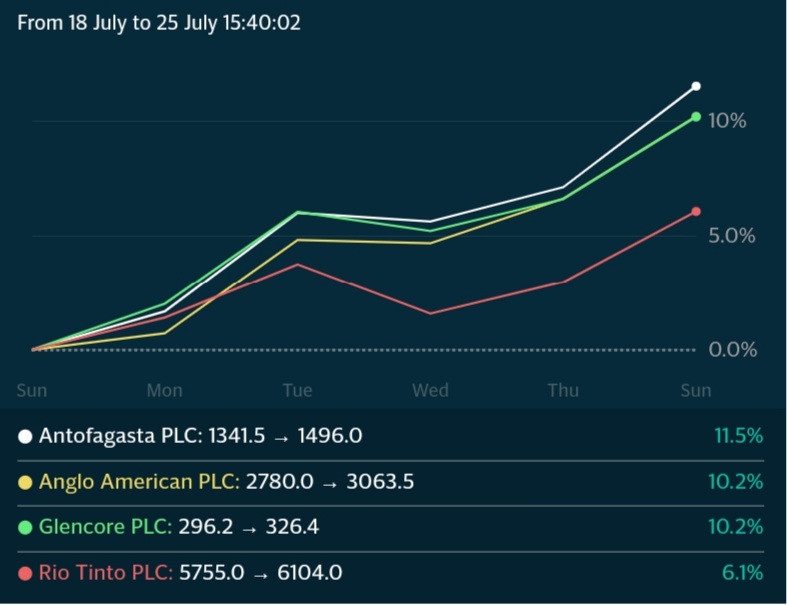
This is set to be a big week for mining earnings, as some of the world’s biggest mining companies will begin to show the market exactly how much this commodity boom is helping. This week will see the top five western diversified mining companies report earnings, and investors should be watching for record profits that could drive dividend payouts to match.
Analysts estimates show that the top five miners may have raked in a combined $85 billion in the first half of 2021, double the number from 2020. Of course, lockdowns and supply chain meltdowns had serious effects on earnings last year. As processes slowed to a halt and demand dropped off a cliff, mining companies mainly were sitting on their hands like the rest of the economy.
However, the latter part of 2020 saw engines start up and restrictions lifted in many mining-friendly jurisdictions, and 2021 has accelerated the commodity price gains from last year.
The first to report on Wednesday will be Rio Tinto Group and is expected to announce $22 billion in profits for the first half of the year, equalling the same amount as its total profits in 2020.
Other companies such as Glencore, Anglo American, and Vale SA were also expected to post massive profits for the first six months of 2021, and possibly their highest-ever numbers for the six months to June period, according to estimates from analysts compiled by Bloomberg.
The sector has seen a revival of its activities faster than most other sectors of the economy as the industry has been one of the primary beneficiaries of the recovery stimulus injected into the global economy. With trillions of dollars in recovery packages going out, demand for commodities has bounced off 2020 lows to skyrockets higher every single month. Demand for commodities like iron ore, aluminum, steel, and copper are driving prices higher every week while inflation pressures continue to spread through the economy.
This bull run for commodities has been a huge gift for mining companies who have the tailwind of demand and higher prices for their production to account for big profits.
Ben Davis, an analyst at Liberum Capital, said, “This should be a pretty much stellar set of results all round. We’re expecting record dividends from BHP and Rio, while Anglo and Glencore also have the potential to surprise.”
Stocks have been on a tear lately, up double digits in some cases in a single week, so there may be room to move higher on earnings news. Freeport-McMoRan already hinted at its blockbuster results when it announced it had wiped out $5 billion in debt over the last 12 months, blasting past a target month ahead of the planned schedule.
A record dividend was also paid out by Anglo American Platinum Ltd. (79% owned by Anglo American) on Monday of $3.1 billion, equal to 100% of first-half headline earnings. In a significant understatement, CEO Natascha Voljoes said the company was in a “strong financial position” and that the company was able to deliver “industry-leading returns.”
Everyone is set to benefit from higher profits from miners this year, beyond stakeholders and investors in the companies themselves. Government should also see higher tax receipts from miners, who contribute significantly to the global economy and often up to a third of any given domestic economy in many regions like South and Central America, and Africa.
The above references an opinion and is for information purposes only. It is not intended to be investment advice. Seek a licensed professional for investment advice. The author is not an insider or shareholder of any of the companies mentioned above.


Diavik property, Canada. Source: Rio TintoCopper stocks are on a tear this year, in no small part due to the rising price of copper as supply shortages and a surging demand boom converge to create some of the best conditions in recent history for stocks. While the current climate has been more than favourable for copper stocks, they have often had an advantage historically over gold and other precious metal stocks due to the red metal’s multiple industrial uses.
Rio Tinto (NYSE:RIO)
Producing iron ore, copper, diamonds, gold, and uranium, Rio Tinto is one of the largest mining companies in the world. The stock has doubled in the past year, reflecting the company’s return to near-full production capacity as well as a lifting of lockdown restrictions in the 35 countries it operates in globally.
Southern Copper Corporation (NYSE:SCCO)
With mining operations located in Peru and Mexico along with exploration operations in both those countries plus Chile, Southern Copper is one the largest integrated copper producers. The last year has seen SCCO stock soar 110%. Investors who have held the stock must be happy to see their positions double over the past 12 months.
Solaris Resources (TSX:SLS)
As a junior mining company, Solaris Resources holds a large amount of potential. The company is focused on its flagship Warintza project in Ecuador, for which it has reported positive assay results as it continues to expand the project to adjacent sites. Investors seem to like the progress, because the stock is up over 1000% since the IPO less than a year ago.
Freeport-McMoran Inc. (NYSE:FCX)
This company operates large and long-term geographically diverse assets that hold reserves of copper, gold, and molybdenum. The company’s scale is used to maintain a dominant position in the market, using properties like the Grasberg mineral district Indonesia, which is one of the largest copper and gold deposits in the world, to fortify its balance sheet. FCX stock is up 370% in the past year, as investors continue to pile into this veteran mining company delivering year after year.
Conditions Are Ripe for Copper Miners
Mining companies exploring and producing base metals like copper usually have higher dividend yields than hedges against inflation like gold stocks. They are also generally better value as they sit cheaper in relation to earnings and cash flow. With a low P/E, copper stocks usually have less distance to fall if markets take a hit, and the upside is higher when the stock runs. With lower risk and higher potential reward, copper stocks are always in favour with the investing community for short, and long-term plays.
Short-term, copper should be able to benefit from the rising demand coming from increased battery production and clean energy storage solutions. The increase of electric car sales and the electrification of infrastructure and power grids around the world requires huge amounts of copper to transport and store the energy. Labour shortages and technical delays in some regions of the world have also contributed to a general slowdown in copper production, but as 2021 rolls on, the environment is looking strong for copper mining companies and their stocks.
The above references an opinion and is for information purposes only. It is not intended to be investment advice. Seek a licensed professional for investment advice. The author is not an insider or shareholder of any of the companies mentioned above.


Foran Mining Corp. (TSXV:FOM) (OTCQX:FMCXF) has announced that Fairfax Financial Holdings Limited has entered into a letter agreement for a CA$100 million investment in Foran Mining Corp. (TSXV:FOM) (OTCQX:FMCXF) in exchange for common shares, non-voting common shares, and warrants. Divided into multiple tranches, the deal will allow Foran Mining Corp. (TSXV:FOM) (OTCQX:FMCXF) to rapidly advance its McIlvenna Bay project and centralized mill for the Hanson Lake district.
The company has been eyeing exploration in the district as it continues to expand operations in the region. The letter highlights that the funding will also enable investment in key technological and operational research and equipment and general corporate purposes.
A Major Vote of Confidence
The significant private placement is a decisive vote of confidence in the company and its business model and will be subscribed in two tranches:
- Tranche 1 – CAD$50 million gross proceeds, comprised of 27,777,778 voting common shares (the “Common Shares”) at a price of CAD$1.80 per Common Share, along with warrants to purchase an aggregate of 8,000,000 million Common Shares (the “Warrants”). The Warrants have an exercise price of CAD$2.09 per Common Share and an exercise period of five years.
- Tranche 2 – CAD$50 million gross proceeds, comprised of 27,777,778 non-voting common shares (the “Non-Voting Shares”) at CAD$1.80 per Non-Voting Share, along with 8,000,000 Warrants.
Source: Foran Mining Corp.
Foran shareholders know that the advantages the company holds are numerous including its 100% owned McIlvenna Bay deposits and the broader Hanson Lake district. Foran Mining Corp. (TSXV:FOM) (OTCQX:FMCXF) plans to build the world’s first carbon-neutral copper mine. The company has stiff competition, though, with companies like Solaris Resources (TSX:SLS.TO) and Rio Tinto (NYSE:RIO) setting carbon-neutral goals for their projects as well.
Creating a True Partnership Through Investment
For now, the expansion of its exploration efforts and current projects could continue to deliver substantial shareholder value, and efforts should be significantly strengthened by Fairfax’s global network of business partners. Foran Mining Corp. (TSXV:FOM) (OTCQX:FMCXF) has strong established ties with banking partners to support the exploration of potential ESG products; the goal of these initiatives is to enhance the overall investment return for all stakeholders, from shareholders to the communities in which the company operates.
The financing is still subject to TSX Venture Exchange approval and Foran Mining Corp. (TSXV:FOM) (OTCQX:FMCXF) shareholder approvals, plus some other standard closing procedures. For now, Fairfax will not be granted any Foran Mining Corp. (TSXV:FOM) (OTCQX:FMCXF) board seats as part of the deal.
The above references an opinion and is for information purposes only. It is not intended to be investment advice. Seek a licensed professional for investment advice. The author is not an insider or shareholder of any of the companies mentioned above.


There are a few key mining regions that always seem to be the most industry-friendly as well as mineral-rich. South America, Eastern Russia, and North America have always stood out as top producers for their ability to put together a robust mining sector and boost their economies overall.
Serbia’s government wants to place the country closer to the top of the world’s mining hotspots. The country announced that the mining and energy sector is set to contribute 10% of the country’s GDP within 10 years. “This year, we are drafting an important legislative framework in the field of energy and mining, but we are also making very important decisions and embarking on a new, green and sustainable path of energy and mining,” Serbia’s Minister of Mining and Energy, Zorana Mihajlovic, said.
The new Law on Energy Efficiency and Rational Use of Energy is designed to help citizens improve insulation in their apartments. With a smaller population and less energy-intensive lifestyles, Serbia still consumes approximately four times more energy than the EU average.
The country has begun taking steps to make the energy sector more efficient for citizens and profitable for the country. Serbia has adopted a package of legislation for the energy and mining sectors, with two new laws – the Law on the Use of Renewable Energy Sources and the Law on Energy Efficiency and Rational Use of Energy – being adopted on April 12. Two existing laws – the Law on Energy and the Law on Mining and Geological Research – have been amended as well to reflect the new direction the country is looking to take with the sector.
Local and state governments will facilitate the first signing of contracts with citizens regarding the improvement of energy efficiency at the end of summer. This will help further the country’s agenda and bring mining companies to the forefront of the driving forces behind the country’s economy. The project is to be financed by local self-governments and state budgets, but Serbia expects that international institutions step in and become stakeholders in the project by next year. “We expect to have an average of around 150 million euros per year for such projects,” Mihajlovic said.
Serbia has a rich mineral portfolio with deposits of coal, iron ore, gold, silver, copper, zinc, and lithium sitting within the country’s borders. In an interview with Happy TV, Mihajlovic claimed the estimated value of mineral reserves in Serbia to exceed 200 billion euros.
Major miners are planning investments in the country and are developing new projects immediately. Chinese company Zijin announced plans to invest $408 million in production and projects in Bor and Majdenapek mining sites in easter Serbia, and plans for a total of $1.1 billion in investments in the country in three years.
Rio Tinto (NYSE:RIO) is developing their Jadar lithium-borates project following a 2004 discovery in the Jadar river valley. That particular site could hold 10% of the world’s deposits of lithium. With the world moving to greener, more sustainable forms of energy production and lithium being needed for technology and battery storage, this could be a major project for the company and a huge win for Serbia. A maiden ore reserve was reported last December by Rio Tinto (NYSE:RIO), signalling that the Jadar project could have the potential to produce battery-grade lithium carbonate (the most valuable version) and boric acid.
The above references an opinion and is for information purposes only. It is not intended to be investment advice. Seek a licensed professional for investment advice. The author is not an insider or shareholder of any of the companies mentioned above.
If you would like to receive our free newsletter via email, simply enter your email address below & click subscribe.
CONNECT WITH US
Tweets
Tweet with hash tag #miningfeeds or @miningfeeds and your tweets will be displayed across this site.
MOST ACTIVE MINING STOCKS
Daily Gainers
      |
AAZ.V | +50.00% |
      |
ADD.AX | +50.00% |
      |
ERA.AX | +50.00% |
      |
DEV.AX | +31.82% |
      |
CASA.V | +30.00% |
      |
RMD.V | +25.00% |
      |
BMG.AX | +25.00% |
      |
CUL.AX | +25.00% |
      |
NOW.V | +22.81% |
      |
ACS.V | +22.58% |












